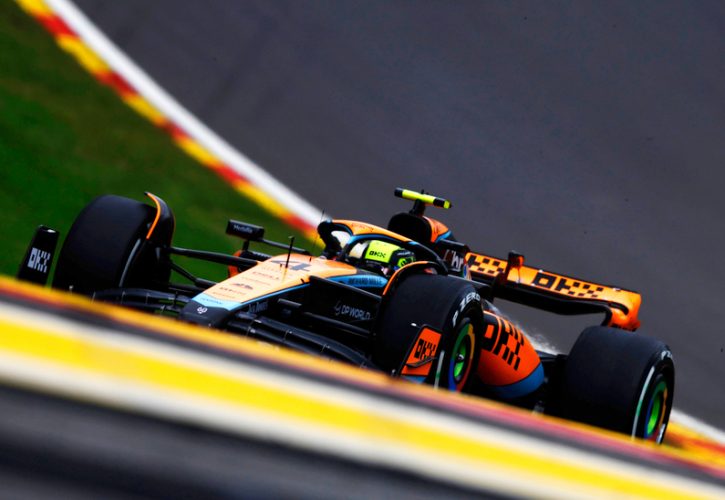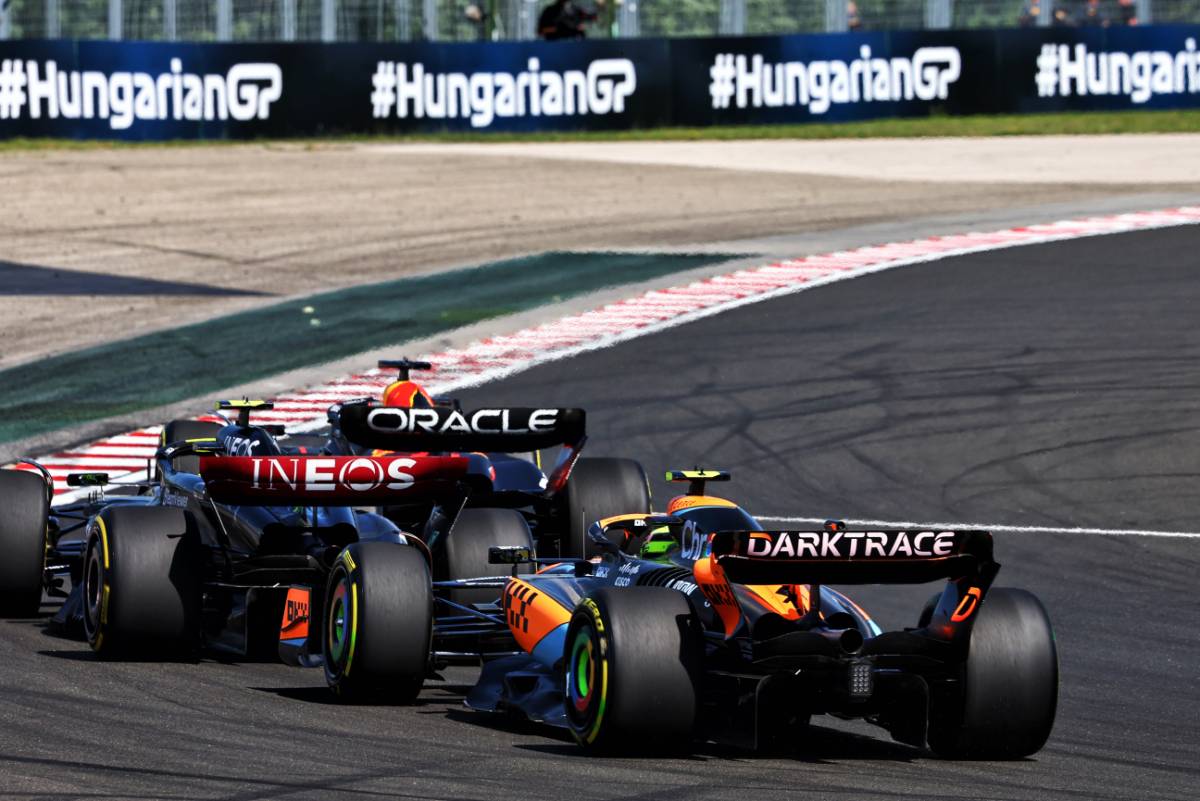
McLaren F1 boss Andrea Stella says that F1’s ground-effect regulations are producing mixed results this season, with overtaking proving more difficult on low-downforce tracks.
After several years of gestation, discussions and debate Formula 1 chose its future direction by opting to overhaul its technical regulations ahead of the 2022 season.
To boost the spectacle on the track and promote overtaking, the sport relied on the return of ground effects, the aero concept pioneered in F1 in the late seventies by Lotus creator Colin Chapman.
Ground effects produce downforce through a car’s underbody and diffuser rather than through the complex wings and bargeboards that had traditionally been at the forefront of F1’s designs.
Overall, the change of direction has been deemed as satisfactory by team, with drivers now able to follow each other more closely thanks to a less disrupted wake of dirty air, which in turn has promoted more overtaking.
Read also:
However, recent aero development has slightly reduced the positive effect of ground-effects, with drivers noting that following another car has once again become challenging.
Furthermore, the shortening of DRS zones by the FIA has arguably also weighed on the action out on the track.

But Stella believes that a bit of nuance needs to be applied when judging the current situation, insisting that limitations are more specific to low-downforce lay-outs such as Spa and Monza.
“I wouldn't talk about limitations of the regulations,” said the McLaren engineer, quoted by Motorsport.com.
“I think what we have observed already last year with this new generation of cars is it's definitely easier to follow in the corners [with the estimated 30% reduction in dirty air].
“So, some tracks where it was very difficult to overtake, like Hungary for instance, they are now tracks in which you can follow.
“Then in the [corner] complex where you have the corners and then once you can go out of the last corner, you are actually close to the car ahead and then you can attack thanks to the DRS.
“So, I would say this aspect of racing has been helped very much by the new generation of cars.”

Aero development has logically led to designs that carve through the air more efficiently at high speed. But as Stella notes, that gain has also reduced the effect of a car’s slipstream.
“When it comes instead to configurations like [Spa] or Monza where you need to have a lot of towing effect to overtake, I think with this generation of cars you have less, let me call it, suction from the car ahead,” the Italian continued.
“So, in this kind of circuit, it has actually become slightly more difficult possibly.
“So, if you want, this is the two faces of the same medal. But I would welcome the fact that we now can follow cars more easily than it was possible with the previous generation of cars.”
Keep up to date with all the F1 news via Facebook and Twitter







